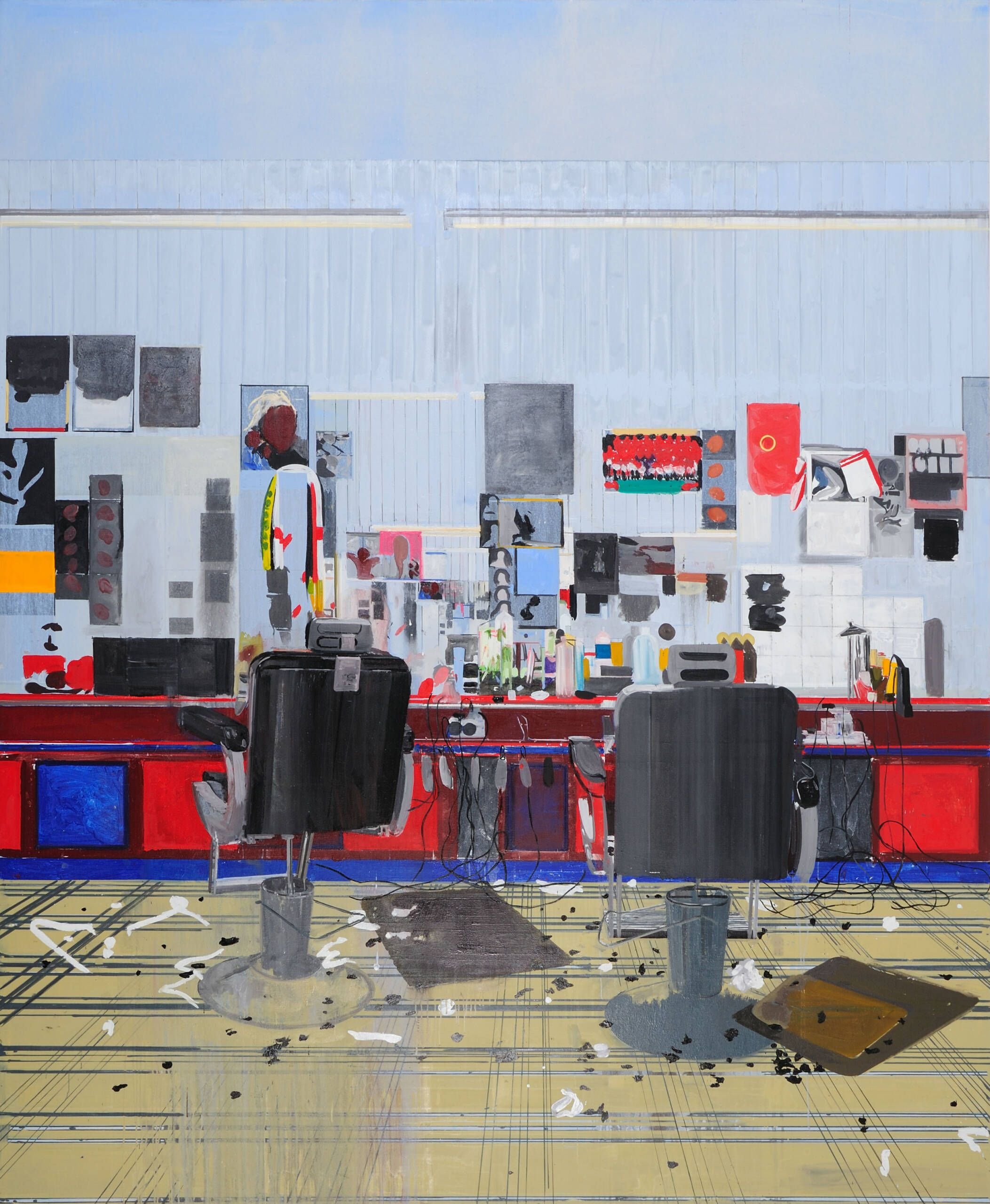Manet, meet Mondrian | Hurvin Anderson at Hastings Contemporary
In 2006, the painter Hurvin Anderson accompanied his father to his regular barbershop, situated in a converted attic in the centre of Birmingham.
Hurvin Anderson, Afrosheen, 2009 © Hurvin Anderson. Courtesy the artist and Thomas Dane GalleryIt was a Jamaican barbershop, which made the father – a Windrush immigrant – feel at home, as it was designed to do, painted in bright colours, the walls covered with posters of iconic black figures and newspaper cuttings: a very Caribbean clutter.
Anderson, born in Birmingham, has been painting it ever since, using photos he took as source material, experimenting with different styles ranging between – and blending – abstraction and figuration. This ‘Barbershop series’ forms the core of the exhibition Salon Paintings, which opened at Hastings Contemporary last week.
The artist, whose work sifts through issues of identity, memory, and displacement, loves working in series. He came to the fore with his Ball Watching paintings, inspired by in incident in Hansdsworth Park in Birmingham. During a kickaround with his friends the football was punted into the middle of an adjacent pond. Anderson took a photograph of the group standing at the water’s edge, wondering how to retrieve it. He used the image of these forlorn footballers as the basis of scores of paintings, transposing the figures into different settings, evoking the liminal, outsider status of the Jamaican-heritage community he belonged to. The works echoed the flat, colourful style of Peter Doig, also bringing to mind Paul Gauguin’s peopled Tahitian landscapes, and incorporating elements of Abstract Expressionism.
Anderson’s stock rose. In 2009 he was given a solo show at Tate Britain. In 2011 and 2016 he was exhibited by the Michael Werner Gallery in New York. In 2017 he was nominated for the Turner Prize (won by Lubaina Himid). In 2021, shortly after a solo exhibition at the Arts Club in Chicago, his early (1997) painting Audition – based on a photograph of a municipal swimming pool taken by his brother – went for £7.4m at Christie’s sale, five times its estimate. And earlier this year, he was made a member of the RA.
Hurvin Anderson’s paintings are the fruit of meticulous preparation. This show, previously displayed at the Hepworth in Wakefield and proceeding to the Kistefos Museum in Norway next spring, includes sketches, drawings and studies enabling the viewer to better understand the artist’s MO, and the broad range of styles and techniques he has mastered.
In a recent interview Anderson suggested that Manet’s A Bar at the Folie-Bergères had informed the series, with its mirrored reversal of foreground and background and its detailed attention to site-specific paraphernalia. But there’s so much else in there, too: a trip round the gallery is like a lesson in the progression of modern art, with nods to Mondrian, Richard Diebencom (who similarly moved seamlessly between abstraction and figuration), Richard Hamilton and Euan Uglow, among many others.
A stand-out piece portrays the barbershop wall, featuring portraits of Martin Luther King and Malcolm X, tacked up above a shelf-full of pomades, waxes, sprays, shampoos, oils and gels. Other pin-ups around them are uncompleted, the faces left blank. Anderson is interested in the fallibility of memory, and the title of the piece – Is It OK To Be Black? – derives from a mishearing on the artist’s part of a barber delivering the classic barbershop question, while holding a mirror to the mirror: ‘is it OK at the back?’ There’s a lot to chew on there. Here’s an artist that makes you think.
Hurvin Anderson: Salon Paintings runs at Hastings Contemporary until March 3, alongside The Dance of the People and the Natural World, by Nigerian painter Nengi Omuku, and the The Fourth Wall, by installation artist Roland Hicks.

